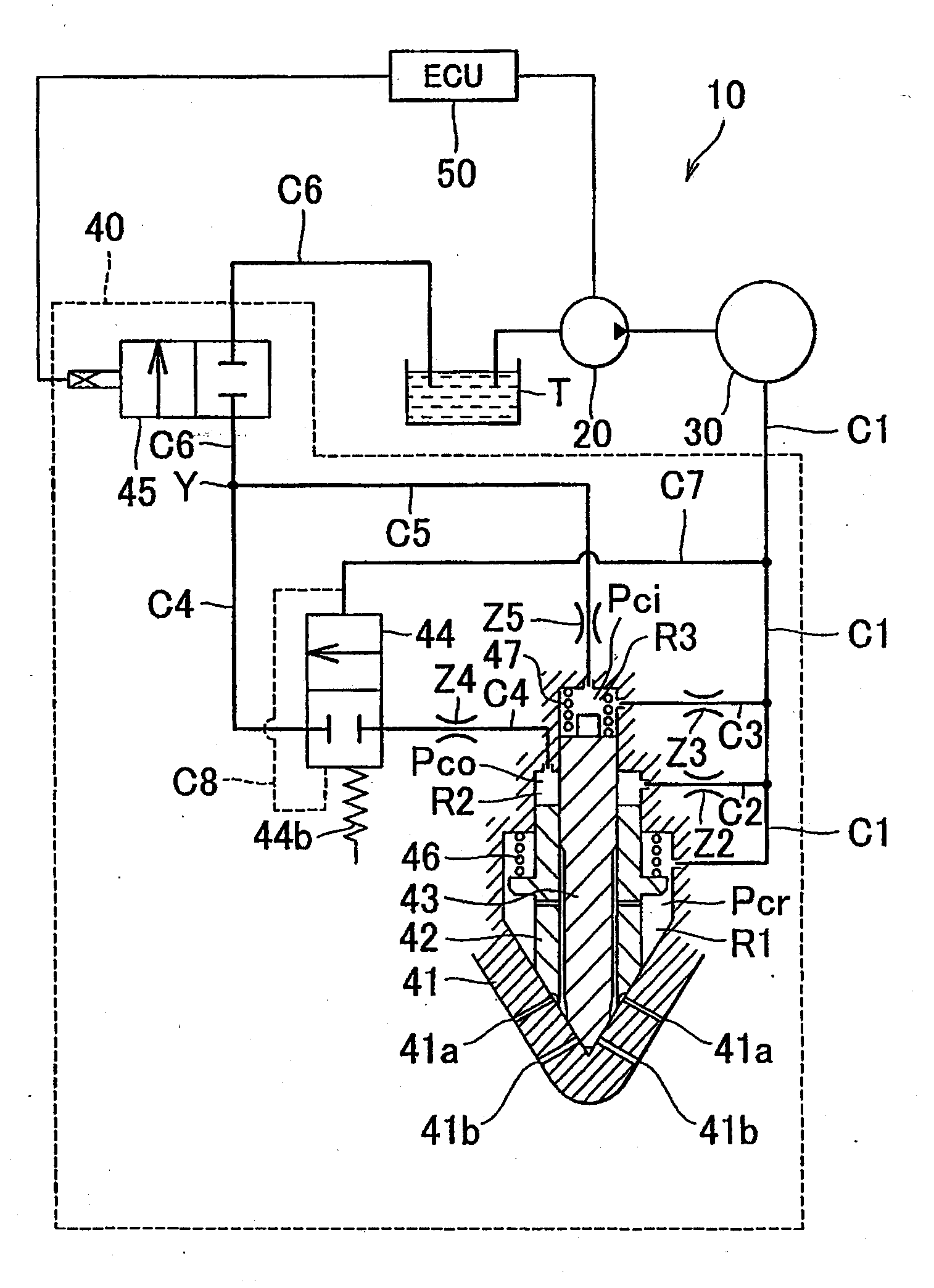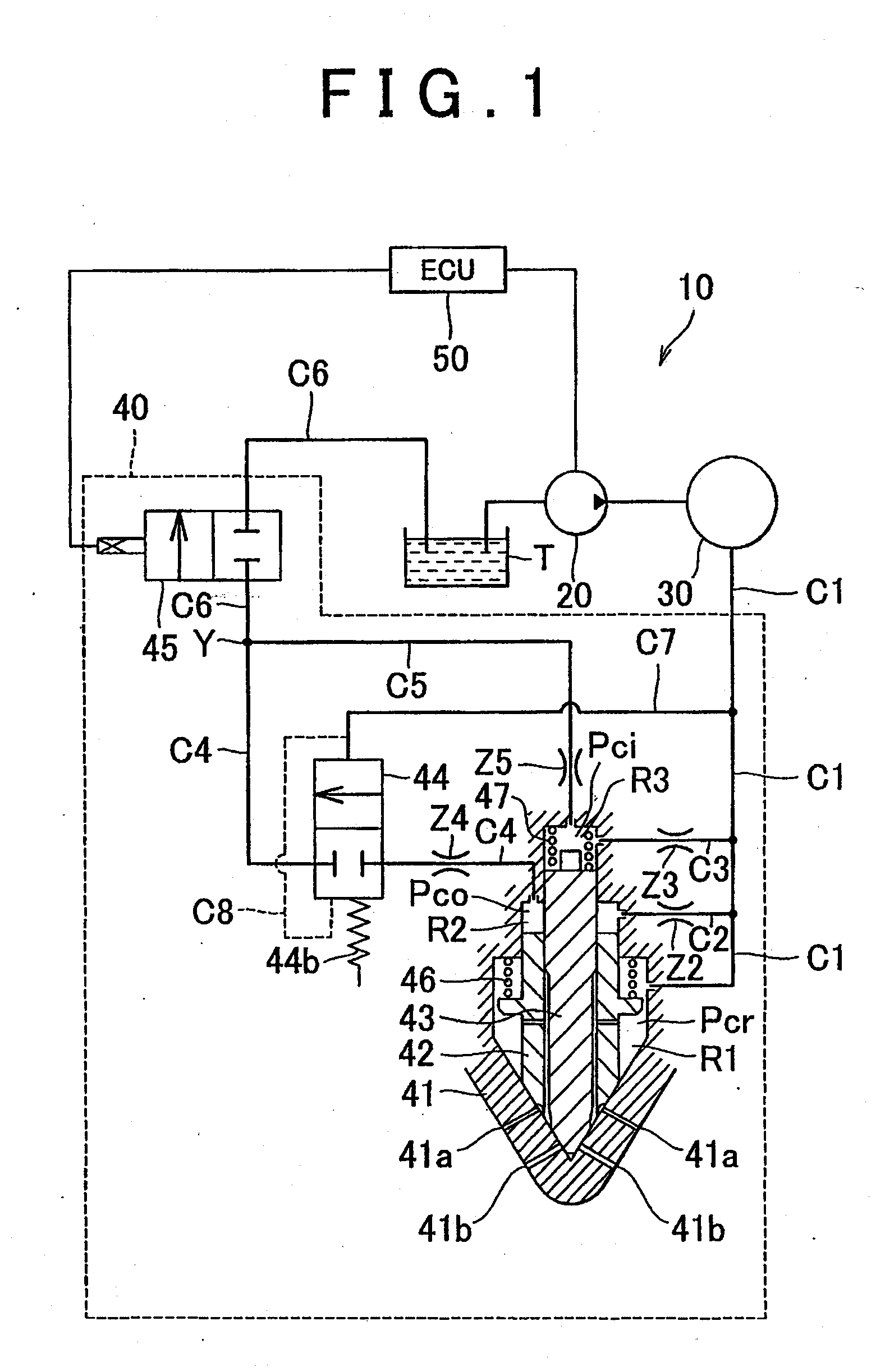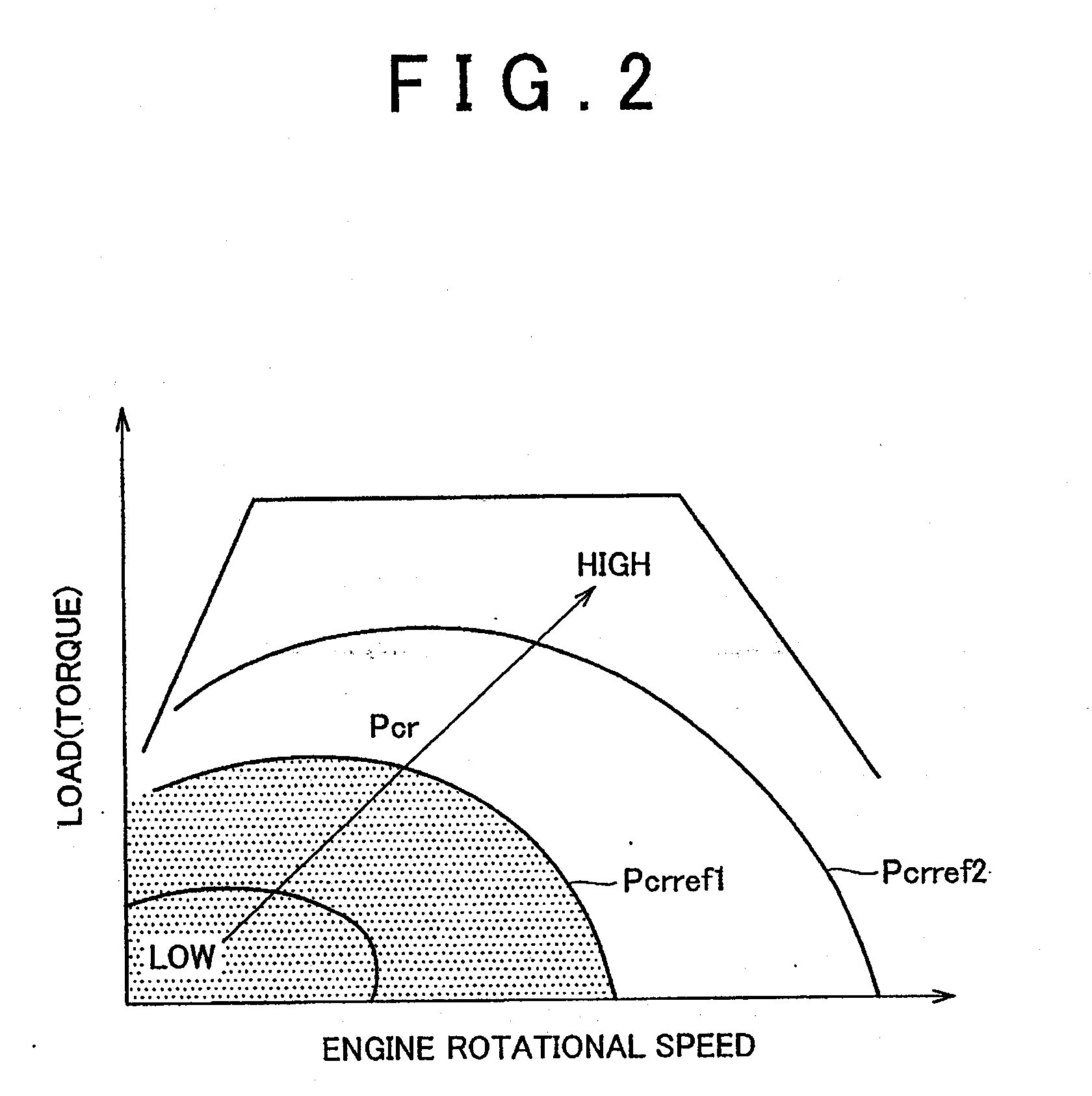Fuel injection control device and method of controlling fuel injection for an internal combustion engine
a technology of fuel injection control and internal combustion engine, which is applied in the direction of fuel injecting pump, liquid fuel feeder, machine/engine, etc., can solve the problems of large amount of smoke in exhaust gas, difficult to get on squish of fuel spray, and large diffusion of fuel spray, so as to achieve shortening of the total period of fuel injection and increasing the injection rate
- Summary
- Abstract
- Description
- Claims
- Application Information
AI Technical Summary
Benefits of technology
Problems solved by technology
Method used
Image
Examples
first embodiment
[0089]FIG. 1 shows a schematic construction of an entire fuel injection control device 10 for an internal combustion engine (diesel engine) according to the first embodiment of the invention. This fuel injection control device 10 is equipped with a fuel pump 20 for sucking / discharging fuel stored in a fuel tank T, a common rail 30 supplied with fuel discharged by the fuel pump 20 at a high pressure (hereinafter referred to as “a rail pressure Pcr”), an injector 40 supplied with fuel at the rail pressure Pcr from the common rail 30 through a fuel supply passage C1 to inject fuel into a combustion chamber (not shown) of the internal combustion engine, and an ECU 50 for controlling the fuel pump 20 and the injector 40. The fuel pump 20 and the common rail 30 correspond to the “high pressure generating portion”.
[0090]In FIG. 1, the single injector 40 supplied with fuel at the rail pressure Pcr from the common rail 30 through the single fuel supply passage C1 is shown. In fact, however, ...
second embodiment
[0136]Next, the fuel injection control device 10 for the internal combustion engine according to the second embodiment of the invention will be described. FIG. 5 shows a schematic construction of the entire device according to the second embodiment of the invention. In this second embodiment of the invention (as well as the other embodiments of the invention), constructional details / elements identical to those of the first embodiment of the invention are denoted respectively by the same reference symbols as in the first embodiment of the invention.
[0137]This second embodiment of the invention is different from the foregoing first embodiment of the invention in which the automatic valve 44 operates in accordance with the rail pressure Pcr itself, only in that the automatic valve 44 operates in accordance with a differential pressure ΔP (=Pcr−Pci) between the rail pressure Pcr and the inner control pressure Pci.
[0138]More specifically, as shown in FIG. 26, the automatic valve 44 of th...
modification example of second embodiment
[0148]Next, the fuel injection control device 10 for the internal combustion engine according to a modification example of the second embodiment of the invention will be described. FIG. 8 shows a schematic construction of the entire device according to this modification example of the second embodiment of the invention. This modification example of the second embodiment of the invention is different from the foregoing second embodiment of the invention in which the downstream end of the outer fuel outflow passage C4 meets with the downstream end of the inner fuel outflow passage C5 at the meeting portion Y, only in that the outer fuel outflow passage C4 is connected at the downstream end thereof to the fuel discharge passage C6 at a position downstream of the control valve 45.
[0149]FIGS. 9 and 10 each show an example of the operation of this modification example of the second embodiment of the invention. FIGS. 9 and 10 correspond to FIGS. 6 and 7 respectively. FIG. 9 shows an exampl...
PUM
 Login to View More
Login to View More Abstract
Description
Claims
Application Information
 Login to View More
Login to View More - R&D
- Intellectual Property
- Life Sciences
- Materials
- Tech Scout
- Unparalleled Data Quality
- Higher Quality Content
- 60% Fewer Hallucinations
Browse by: Latest US Patents, China's latest patents, Technical Efficacy Thesaurus, Application Domain, Technology Topic, Popular Technical Reports.
© 2025 PatSnap. All rights reserved.Legal|Privacy policy|Modern Slavery Act Transparency Statement|Sitemap|About US| Contact US: help@patsnap.com



